Plants, fungi and microbes of the Elemental Air
An essay by Professor Crocosmia, a ghoran explorer and scholar of planar flora
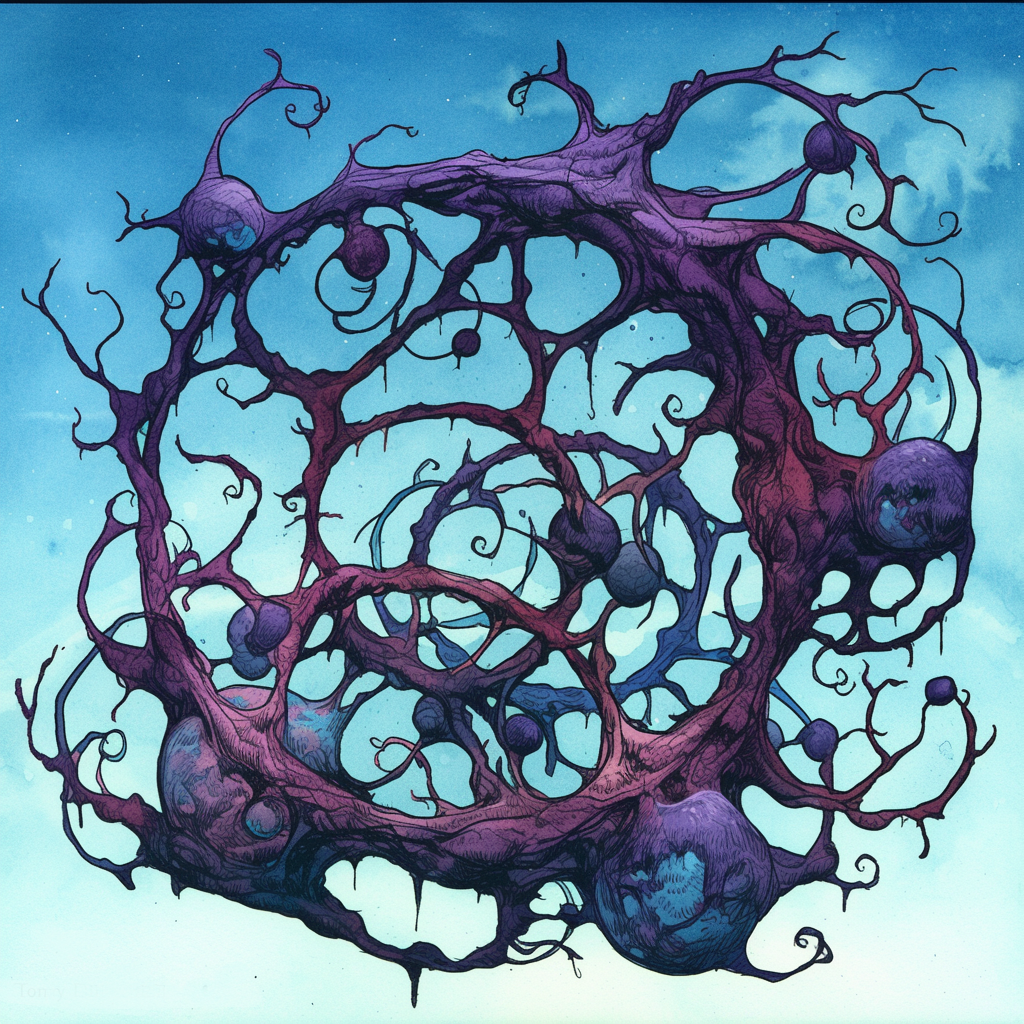
It is known that non-sentient plants need few things to live—air, light, water and soil. There’s no shortage of former two in the Elemental Air. However, water and minerals are a precious commodity on Air, and soil virtually non-existent. Any patch of solid ground is likely to be thriving with foliage, but it should come as no surprise that the enterprising plants of Air have also found ways to thrive without a surface on which to anchor themselves.
Some species are exceptional, however. Azure wart doesn’t seek water, in fact it thrives in more arid environments, such as the Sirocco Straits. These slimy warts are in fact archaea colonies, able to use magic to turn air into water and then use this water to fuel their photosynthesis. However, there’s a catch. The ambient magic of Air can sustain this arcane metabolism only in a few locations. Azure wart can also grow around artificial sources of magic, such as magic items, and this can lead to their degradation. However, to planewalkers azure warts can be a saving grace if they’ve run out of water, for a single colony is able to produce enough water to sustain one humanoid. Enterprising graybeards have tried to grow azure wart outside of the Plane of Air, but so far, this endeavour has been unsuccessful—perhaps the warts are too attuned to their home environment.
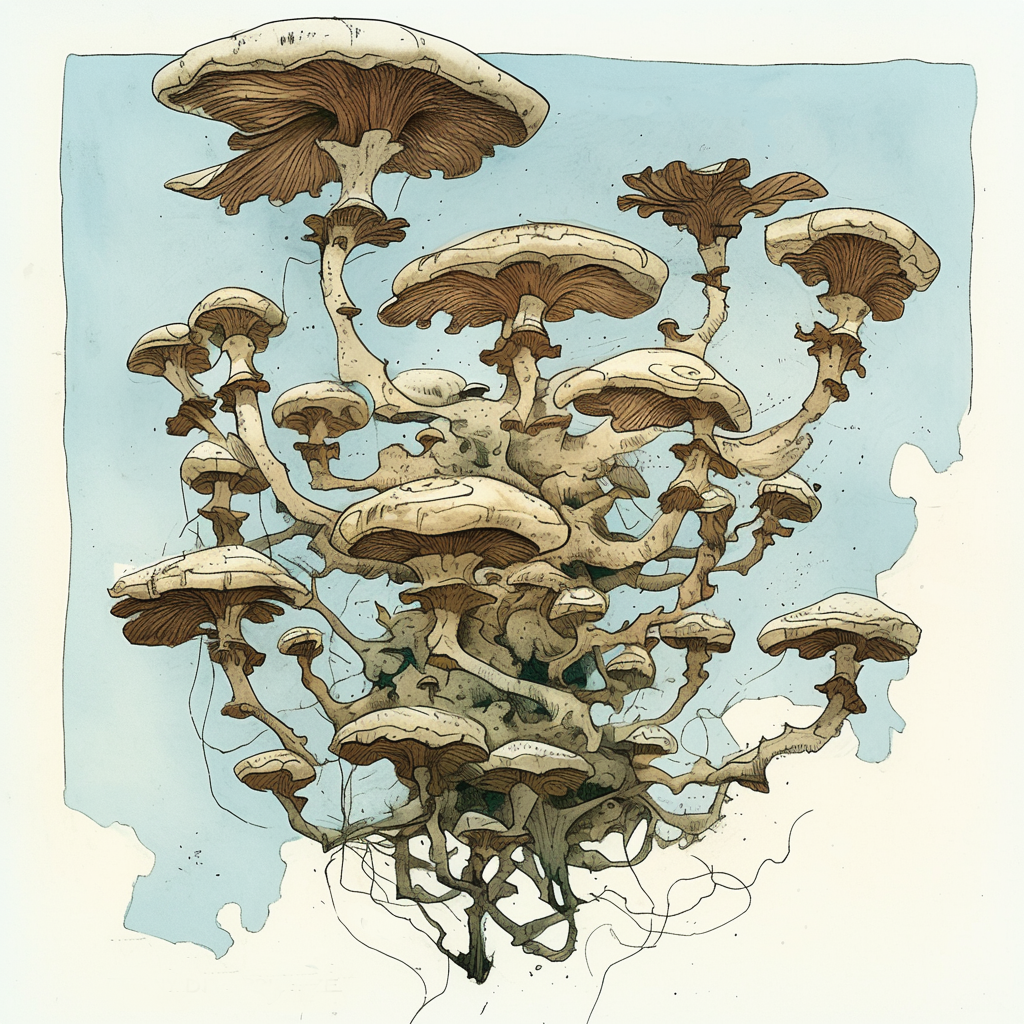
Another important microbe of Elemental Air is cleansing mould. This transparent fungal-like growth covers dead organic matter. While other decomposers turn rotting matter into soil and gas, cleansing mould and similar elemental oddities reduce it to pure air itself. These things cannot harm a living creature, unless its immune system is severely compromised.
The nitrifer is a much more insidious threat. This purplish moss-like growth consumes certain fractions of air and transmutes them into so-called laughing gas. If this gas is not dispelled by winds efficiently enough, it adds up. [A creature that finds itself breathing this laughing gas must make a DC 17 Constitution Saving throw at the start of its turn or become poisoned (for a minute) and have disadvantage on Wisdom saving throws, as its mind is muddied.] The poor sod becomes joyful and filled with laughter. This intoxication is reversible at first, but being poisoned in this way for more than two hours can have detrimental consequences from knocking creatures unconscious to killing them or giving them permanent paralysis.
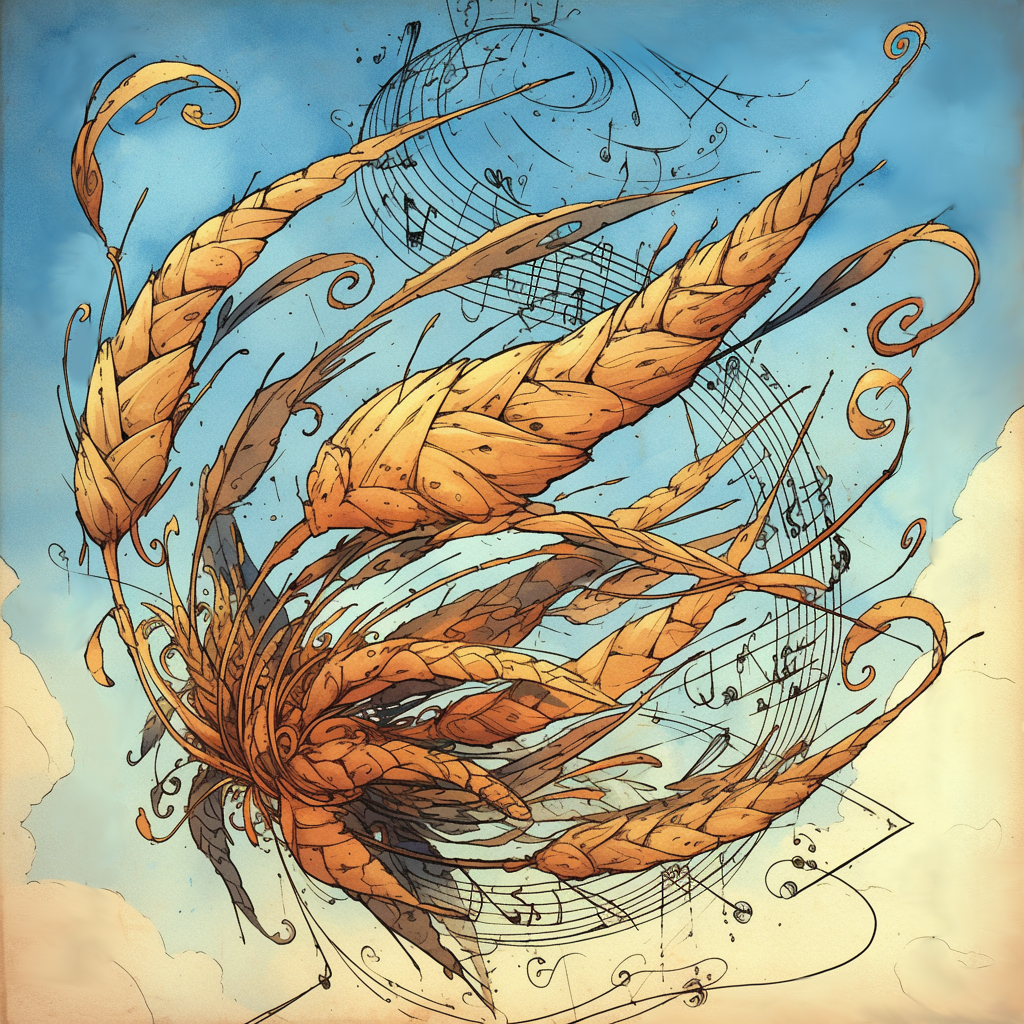
But enough about microscopic pests. There are many more plants that grow around in this plane — both magical and mundane. Whistling wheat is one of the less exciting ones. It is a species of grain that gives out a whistle, when it’s ripe for harvest. Wild whistling wheat seeds can be made into a nutritious porridge. It is bland, but good enough to sustain someone stranded on the plane. Whistling wheat grows everywhere in Air, where there are pockets of Earth and at least some moisture. Agronomists of the Inner Planes take advantage of this resilience through crossbreeding it with domesticated grains.
Dire baobab is another common plant in the Boundless Blue. It is a tree with a massive bottle-shaped trunk and a powerful root system. Baobabs obviously need more water to grow than tiny weeds, but if they can successfully take root, they turn into beautiful behemoths, supporting entire ecosystems around them. Stormflying foxes and uranesias drink nectar from baobab flowers and eat their fruits. Thus, they pollinate the trees and disseminate their seeds. Dire baobabs are invaluable for many nomadic communities in Air. Their bark and wood are useful as materials and their fruits are edible, and quite refreshing. However cutters who value a solid surface under their feet, should be peery—if a dire baobab grows too large, its roots can destroy the earthberg it stands on.
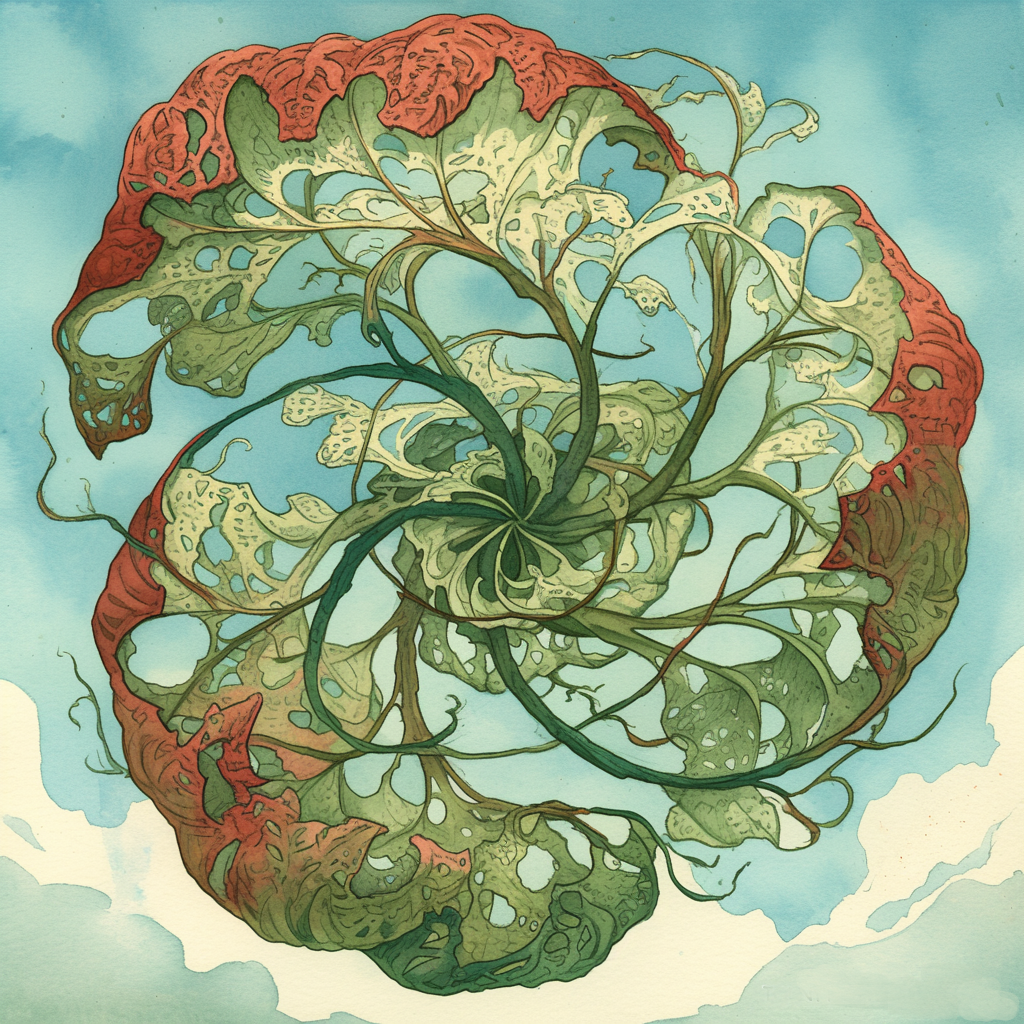
Speaking of solid surfaces—ripplewood is a plant related to saxaul (haloxylon) that can live without any soil. Or, rather, it needs soil to grow up, but then uproots itself like a tumbleweed. Ripplewood is a hardy bush, covered with hairy leaves that also act as airborne roots collecting water and minerals. These plants typically grow in the Sirocco Straits. Recent studies indicate that ripplewood plants can somehow control where they are blown by the winds, though it isn’t clear how they achieve this. Ripplewoods are an important food source for flying camels, and they also can be a great source of fuel.
Dysonia clusters can exist without clinging to surface too. But they still need another element to live—in this case they hover around pockets of Fire or Radiance, using their energy to fuel potent photosynthesis. Nutritious bulbous roots of dysonia hold colonies of symbiotic archaea, with whom it exchanges nutrients. But harvesting dysonias can be dangerous—these plants have an evolutionary adaptation that helps them stay at the comfortable distance from the pockets of fire. To do that, they expel heated air from specialised stalks and change their direction this or that way. [If some berk tries to handle dysonia without care, they must succeed on DC 14 Dexterity Saving throw or take 4d4 fire damage and be forced to release the plant, as it tries to break free and search for a source of light and heat.]
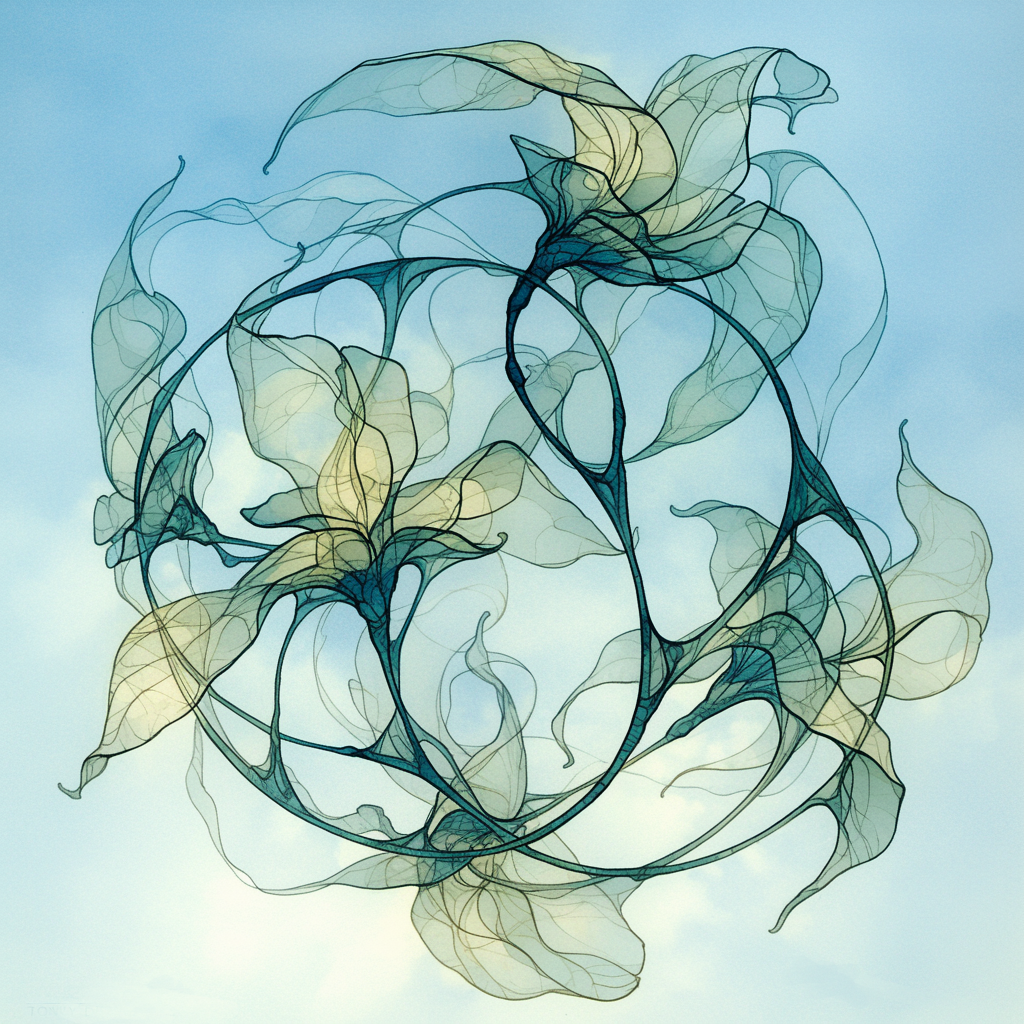
The ether bloom is a particular marvel of Deep Air. It’s a plant that seems more of an idea than substance, as if the winds itself paused to dream of life. It floats untethered, a ghostly bloom of solidified air, its translucent petals refracting ambient light into faint rainbows. Touch it, and your hand might pass through as though it were mist—or you might feel the faintest resistance, like you are brushing against a memory. The ether bloom thrives in pockets of pure, undisturbed atmosphere where the winds hush into stillness. These blooms cluster around invisible “eddies” of elemental energy, feeding not on soil or sunlight but on the essence of air itself—its motion, its purity, its boundless freedom. They share their space with flocks of translucent creatures—winged animentals and tiny air elementals—that sip from the blooms’ intangible nectar, a substance that is more sensation than sustenance. When storms rage across the plane, ether blooms scatter like dandelion seeds caught in a gale, their petals dissolving into vapour only to coalesce again in calmer skies. Some say they are born from the dreams of djinn who long for beauty even in their endless skies. Whatever their origin, encountering an ether bloom is like catching a glimpse of the Plane’s soul—ephemeral, untouchable, and endlessly free.
The windblown are a peculiar and elusive lifeforms, appearing as wide, paper-thin shapes—like leaves or scraps of parchment. They tumble endlessly on the winds, their edges curling and folding as they are caught in an eternal dance with the currents. They’re not truly solid, but neither are they entirely insubstantial; their texture is like a whisper of silk or the faint resistance of a cobweb brushing against your skin. These lichen creatures live in a symbiotic relationship with algae, which provides them with nutrients. To sustain its symbionts, windblown absorbs moisture and tiny dust particles from air or objects it smashes into. Fortunately, this doesn’t do any harm save from slight skin irritation. Few creatures feed on windblown—it isn’t very nutritional and is hard to chew. Windblown sheets produce thousands of spores—that’s how this lichen remains very numerous on this plane. In calm skies, they cluster in great “cloud libraries,” where their translucent forms stack and shimmer. Some planewalkers even claim that the windblown bear faint markings, the vaguest concept of writing, and it is only when they come together and stack that the words of wisdom they hold are bold enough to read. Many other lichens and plants live the same way, but most of them are anchored to floating islands. A few exist perpetually suspended in the Air, like a flying spherical algae helivox. It is edible and prefers moist environments such as clouds.
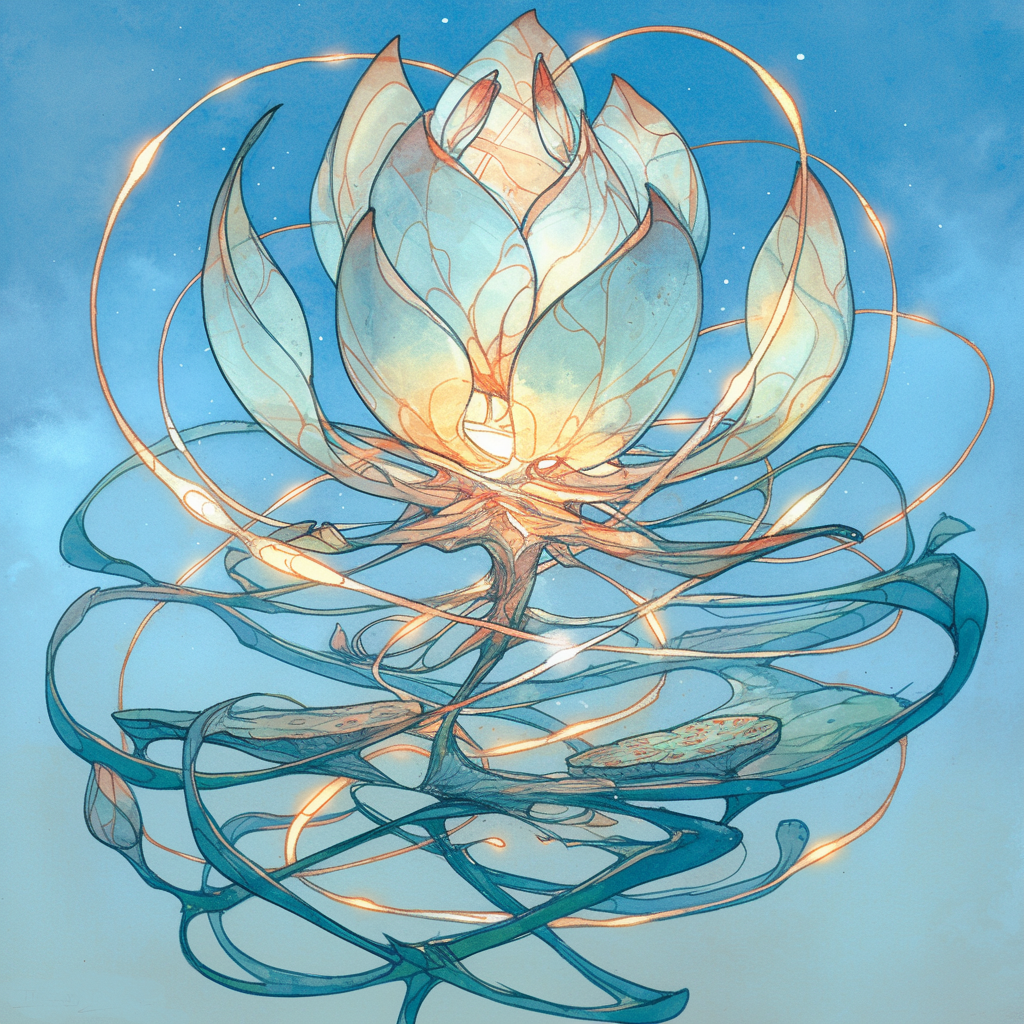
The final plant we will consider is the sky lotus. In many ways it is similar to dysonia—this plant also relies on symbiotic archaea to gain sustenance. However, these plants grow out in water orbs and clouds. Sky lotus plants have extensive root systems that extend into the water or clouds, while their leaves and a single flower float outside of them. Sky lotus flowers are beautiful, but fragile—and sell for 10 gp, if you can transport them. They are also edible, and starchy roots are too, however there’s a catch—all parts of a sky lotus contain arsenic. Consuming one lotus isn’t immediately threatening, but eating them regularly leads to chronic poisoning. The most valuable part of the lotus—the oil, acquired from its seed pods—is also the most dangerous. [Consuming an amount of oil collected from ten sky lotuses produces an effect equivalent to the potion of flying, but the consumer also suffers 3d6 poison damage and gains the poisoned condition for 1 hour.]
See Also: Bestiary of Air
Sources: Margarita and Jon Winter-Holt. The windblown are mentioned in the Planescape Monstrous Compendium Vol. 3 [2e] p122 and expanded upon here. All the rest of the plants and fungi mentioned here are homebrew additions to the lore.



Wonder if there’s any windmills to grind up the plants in Air?